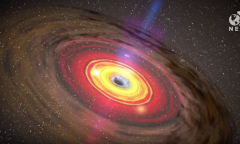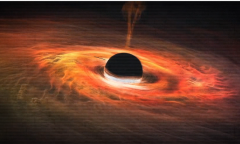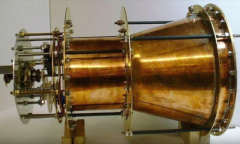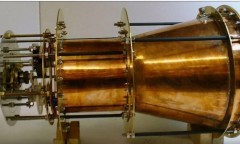By Prei Dy, | May 29, 2017

China is set to launch its first X-ray telescope called the HXMT to help study black hole and neutron stars activities in the Milky Way. (YouTube)
China is set to launch its first X-ray space observatory this year, called the Hard X-ray Modulation Telescope (HXMT), which aims to solve several of the universe's mysteries including the search for black holes and neutron stars that are believed to be hidden in the Milky Way galaxy.
Like Us on Facebook
"Our space telescope has unique capabilities to observe high-energy celestial bodies such as black holes and neutron stars," Zhang Shuangnan, HXMT's lead scientist, told state-backed Xinhua News agency.
Unlike other X-ray astronomical satellites, China's HXMT has significantly improved, featuring larger detection area, broader energy range, and wider field of view. It also aims to work on extreme gravity and density conditions, allowing astronomers to discover new activities of black holes and study neuron.
The HXMT will be capable of carrying an all-sky survey of hard, high-energy X-rays with energy between 20 and 200 Kiloelectronvolts (keV), Sputnik news reported. This will complement with other X-ray satellites like NASA's Chandra telescope, which was launched in 1999 and operates in the "soft X-ray" range of between 80 electronvolt and 10 KeV.
Meanwhile, experts are hoping that the HXMT will make observations on significant cosmic X-ray sources such as the Active Galactic Nuclei (AGNs), which is a burst in luminosity believed to come from the accretion disk of cold dust and gas that wraps the supermassive black hole at the heart of every galaxy.
Other satellites have also previously carried out sky surveys and discovered several celestial sources of X-rays. But the sources are sometimes variable and occasional intense flares can be missed in merely one or two surveys, Zhang said. So HXMT will repeatedly scan the Milky Way and search for active and variable celestial bodies emitting X-rays.
"There are so many black holes and neutron stars in the universe, but we don't have a thorough understanding of any of them - so we need new satellites to observe more," Zhang said.
-
Use of Coronavirus Pandemic Drones Raises Privacy Concerns: Drones Spread Fear, Local Officials Say

-
Coronavirus Hampers The Delivery Of Lockheed Martin F-35 Stealth Fighters For 2020

-
Instagram Speeds Up Plans to Add Account Memorialization Feature Due to COVID-19 Deaths

-
NASA: Perseverance Plans to Bring 'Mars Rock' to Earth in 2031

-
600 Dead And 3,000 In The Hospital as Iranians Believed Drinking High-Concentrations of Alcohol Can Cure The Coronavirus

-
600 Dead And 3,000 In The Hospital as Iranians Believed Drinking High-Concentrations of Alcohol Can Cure The Coronavirus

-
COVID-19: Doctors, Nurses Use Virtual Reality to Learn New Skills in Treating Coronavirus Patients












